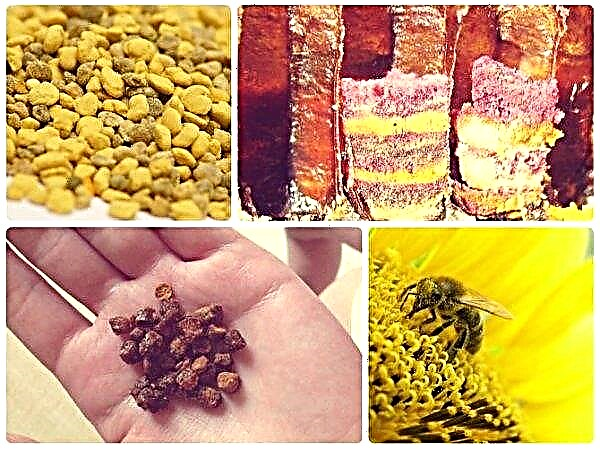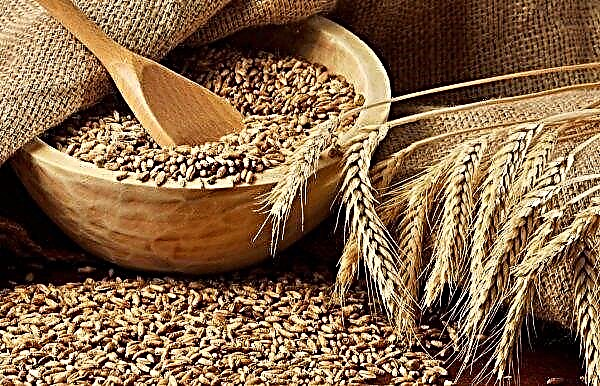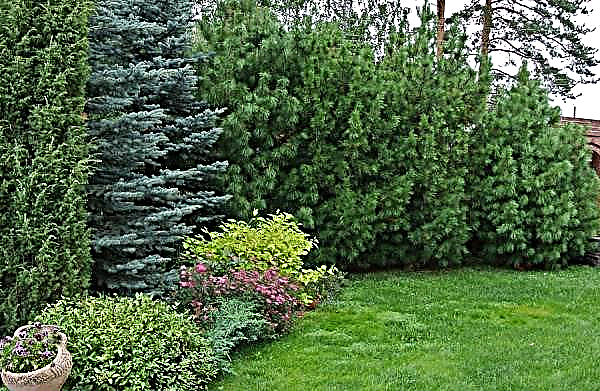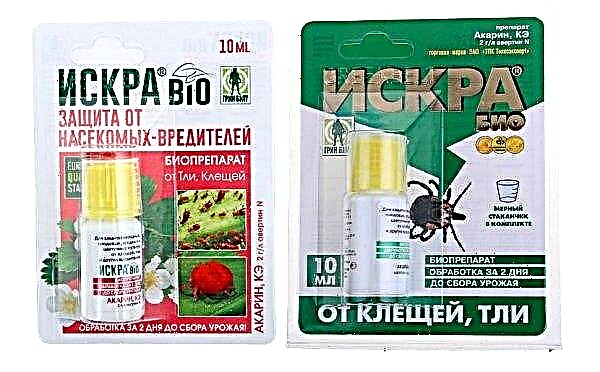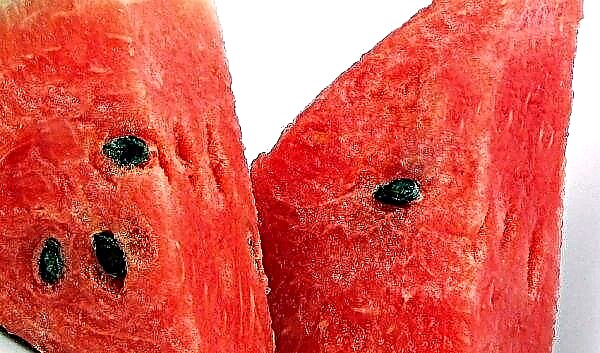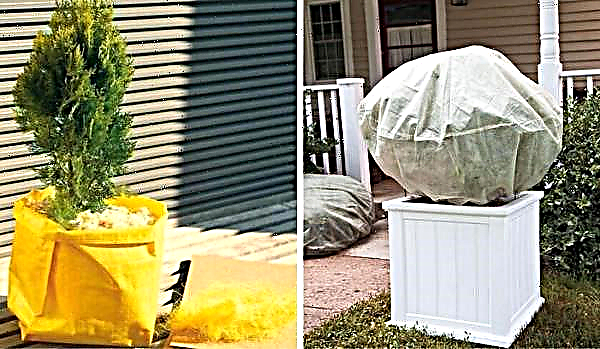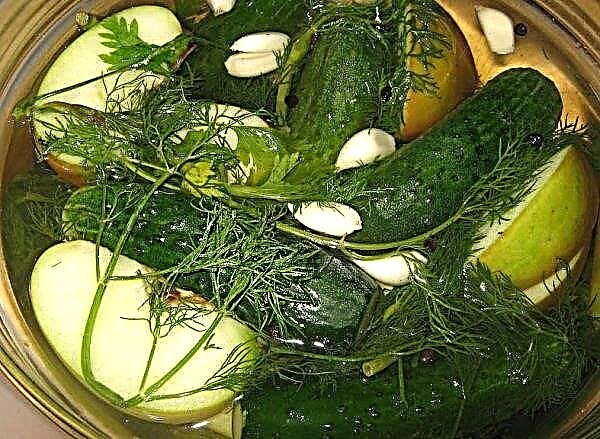It is simply unthinkable to do without the presence of a cabbage product in the human diet. But to grow this vegetable in the garden is not very easy: it requires some experience and knowledge to care for the plant. One of the unpretentious varieties that even a novice gardener can successfully grow is a white cabbage Gloria.
Characterization and description of the variety
Gloria Cabbage is a mid-season hybrid (F1) that was bred by Dutch breeders in 2005. The State Register of Seed Production of the Russian Federation was patented in 2011. The producer of seeds of this variety is the selection company Syngenta (Syngenta), the country of the Netherlands. The culture is well adapted to different climatic zones and can grow in different areas. The ripening period is 75–80 days. The hybrid is unique in its purpose - it is possible to sow a vegetable in two different periods.. Early sowing is carried out for the summer sale of the product, and late - for storage and processing of vegetables in the winter.
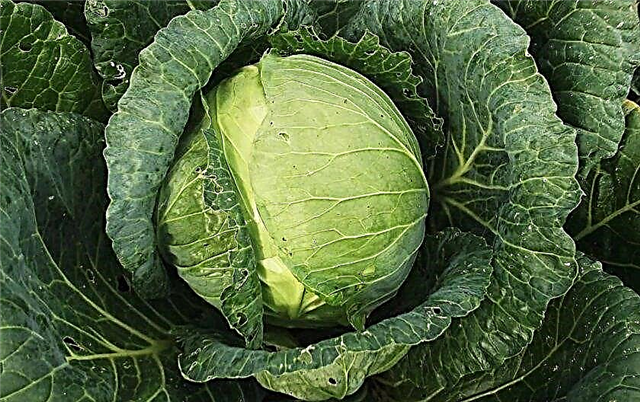
Description of a head of cabbage
The forks of cabbage has the following characteristics:
- shape - round, aligned;
- weight - 2.7–3.5 kg;
- leaves - thin, green, with a waxy coating;
- structure - dense (on a five-point grid - density 4.4 points);
- stump - internal: short, external: medium length;
- sectional color is white.

Vegetable application
The variety has a pleasant, sweet taste and therefore finds wide application both in fresh form and in the preparation of various dishes in cooking, during preservation and pickling for the winter. Having a rich vitamin composition and a set of useful properties, it is in demand in traditional medicine.
Cabbage juice, as a remedy, is used for liver disease, gastritis, tuberculosis, toothache, tumors, constipation, tonsillitis, diabetes mellitus, etc. They have healing properties and leaves, shakers, plant roots. Fresh and pickled cabbage juice is used for cosmetic purposes.
Did you know? Sauerkraut is healthier than fresh: its nutritional qualities last about 10 months.
Resistance to disease
According to the seed producer, this variety has good immunity to fusariosis (a dangerous fungal disease that manifests itself at all stages of the growing season and leads to wilting of the plant). But with increased humidity and lower ambient temperature, cabbage diseases such as gray rot and powdery mildew can occur. .
Pros and cons of the variety
- The advantages of the hybrid are as follows:
- the presence of excellent taste;
- high productivity (8–10 kg per 1 m²);
- lack of tendency to crack the head;
- marketable, beautiful, product appearance;
- high resistance to fusarium;
- does not need intensive nutrition with mineral fertilizers;
- good vegetable storage performance;
- universality of application;
- resistance and ductility to temperature extremes;
- excellent transportability;
- easy work during harvesting in manual and mechanized versions;
- the possibility of sowing in two terms.
- The disadvantages of this type of cabbage include several points:
- high demands on the illuminance of the site;
- dependence on soil fertility;
- the need for systematic watering of plants with subsequent loosening of the soil;
- the tendency of seedlings to stretch.
Did you know? Head out — it is a huge wintering bud that gives seeds the next year after germination.
Planting varieties
When growing crops, it is important to choose a well-lit, sunny, open place of growth. Otherwise, with a lack of light, the forks will grow small and loose, the yield will be low. An important role is played by the presence of fertile soil. Vegetable does not grow well on acidic lands, neutral soil, loamy soils that contain humus and easily retain moisture are most suitable.
A positive result gives the observance of crop rotation. The best predecessors for cabbage are legumes, onions, cucumbers, potatoes and root crops. It is undesirable to plant a vegetable in a place where tomatoes, radishes, turnips used to grow. Planting is carried out in two ways: seedlings and sowing seeds in open ground.
Growing seedlings
For this variety, it is advisable to choose a seedling method of cultivating the crop, especially if early sowing is carried out for the summer ripening period.. Sowing of seeds is carried out in the first half of April. In pre-prepared containers with a nutritious soil mixture (a mixture of earth, peat or humus), the seeds are buried by 1.5–2 cm, moisten the ground, cover with glass or transparent film material. After about 5-7 days, the first sprouts will appear and the shelter must be removed immediately. If this is not done in time, the sprouts will stretch, the seedlings will be weak.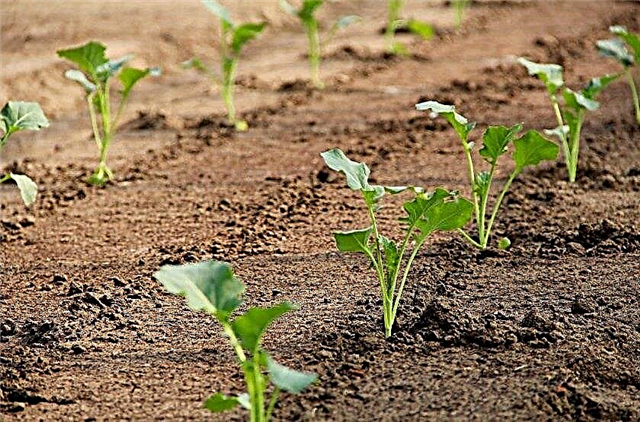
Young plants are kept at a temperature: in the daytime +14 ... + 18 ° С, at night +8 ... + 10 ° С. Produce regular irrigation. Seedlings dive during the formation of 2 true leaves with a distance between seedlings of 6–7 cm. 10–15 days before transplanting seedlings into open ground, it is quenched. First, the stay of plants in the fresh air is limited to within 30 minutes, and then, gradually increasing every day, up to 5-6 hours.

In the open, already well-warmed soil, they are planted in the second half of May, if there are 5–7 leaves on the plants and with a plant height of 15–20 cm. The ambient temperature should be stably stable: from + 12 ° С. The Gloria variety satisfactorily tolerates changes in daytime and nighttime fluctuations from + 20 ° С to -6 ° С, but nevertheless, the optimum temperature is the range +10 ... + 20 ° С.
Prepared wells are watered with water (about 1 liter of liquid), fertilizers are added from a mixture of peat, sand, ash and compost, plants are placed and covered with soil to the first lower leaves, slightly compacting the soil. It is necessary to adhere to the planting scheme: the distance between plants should be at least 50 cm, and the row spacing - 0.6 m. For the first 3-4 days after planting, the cabbage needs shading to improve the rapid rooting of the plant.
 In case of probability of night frosts, the stands are covered with a film or agrofibre.
In case of probability of night frosts, the stands are covered with a film or agrofibre.
Reckless way
You can also apply the method of growing crops by sowing seeds in open ground, which is successfully used even in northern habitats. A huge advantage of this option is the possibility of obtaining strong, healthy plants, since they do not get sick from transplantation (cabbage does not tolerate it). When warm weather is established with a temperature of + 13 ° C and above, the seeds are sown in grooves to a depth of 2 cm with a row spacing of 60–70 cm. Planting pits can be made and 5-6 seeds planted in them, sprinkled with a layer of soil 2- 3 cm. Events are held in late April or early May, depending on the climatic conditions of the growing region. To accelerate the emergence of seedlings, it is advisable to cover the cabbage bed with agrofibre. The appearance of the first shoots is a signal that the shelter must be removed. Plant growth pattern - 0.5 × 0.6 m. When young plants reach a height of 10-15 cm they must be thinned out without fail, leaving the strongest seedlings.
When young plants reach a height of 10-15 cm they must be thinned out without fail, leaving the strongest seedlings.
Landing care
The considered variety of cabbage is undemanding to cultivation, but very responsive to attention and care in relation to it.
Watering and feeding
Planted seedlings are watered daily for a week, then watering is reduced to once every 4-5 days. During the dry period, irrigation is performed every 2-3 days. It is desirable that the water is settled, not cold and does not fall on the leaves, but only under the root of the plant.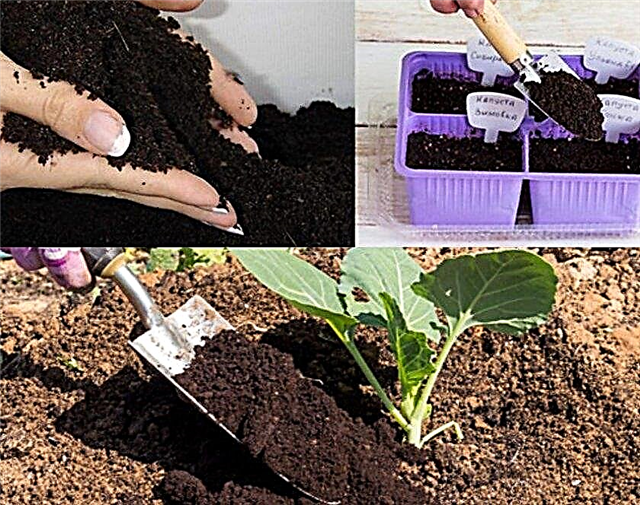 For the best retention of moisture in the earth, it is recommended to mulch peat.
For the best retention of moisture in the earth, it is recommended to mulch peat.
The variety does not need mineral fertilizing, but it responds well to the use of organic fertilizers. Without the introduction of organics, it is hardly worth counting on a high yield. If sowing seeds or transplanting seedlings was carried out in fertilized soil, then you can refuse the first top dressing.
When planting in “poor” soil, the first top dressing is performed - spraying with ammonium nitrate (10 g of substance per 10 liters of water). Two weeks later, a second, nitrogen-containing fertilizer is introduced: a solution of chicken droppings (10 kg of water per 10 liters of water). This will help the plant grow its green mass better. Third, the last feeding is carried out after 14 days, during the formation of the head of cabbage. A mixture of water (10 l), ammonium nitrate (20 g) and superphosphate (30 g) is prepared. The liquid is poured under the root of the plant.
Important! Excess water adversely affects the quality of the forks: due to water content, heading may crack, and product storage may be impaired.
Weed removal and hilling
The area on which the crop grows must be kept clean, without weeds growing on it. A different type of weed acts depressing on the plant, especially the young one: the development of the culture is delayed, the susceptibility to diseases increases and, as a result, the yield decreases. Therefore, the timely removal of weed grass and weeding the beds is so important. After regular watering, the ground near the cabbage stalk is covered with a crust, which prevents the normal access of oxygen to the root system of the vegetable.
Systematic hilling will help to fully get the plant nutrients and moisture, reduce the likelihood of spreading fungal and viral infections, and also increase resistance to adverse natural phenomena.
Rolling coats with moist soil gives them a certain stability and prevents heading from lodging. The event also has a beneficial effect on growing too elongated cabbage seedlings - it gives it strength and the ability to form a young root mass. Hilling should be done once every two weeks, shallowly, carefully, to avoid damage to the roots, adding earth to the base of the plant trunk.
Hilling should be done once every two weeks, shallowly, carefully, to avoid damage to the roots, adding earth to the base of the plant trunk.Pest and Disease Control
The culture has a high resistance to Fusarium, but, like many other types of cabbage, is susceptible to other common diseases: gray rot, powdery mildew, and keel.
Gray rot - A disease that affects cabbages during storage, forming fluffy light mold on them. To combat the disease, the plants are treated with Topsin-M.
For prevention, resort to the following measures:
- do not allow waterlogging of the soil;
- timely remove diseased plants and weeds from the beds;
- disinfect the premises prepared for storage of the crop.
Powdery mildew - the appearance on the leaves of white plaque, which is formed as a result of fungal infection. At the first signs of this ailment, the biofungicide “Fitosporin-M” is used, according to the instructions (once every 14–20 days), until the culture is fully recovered.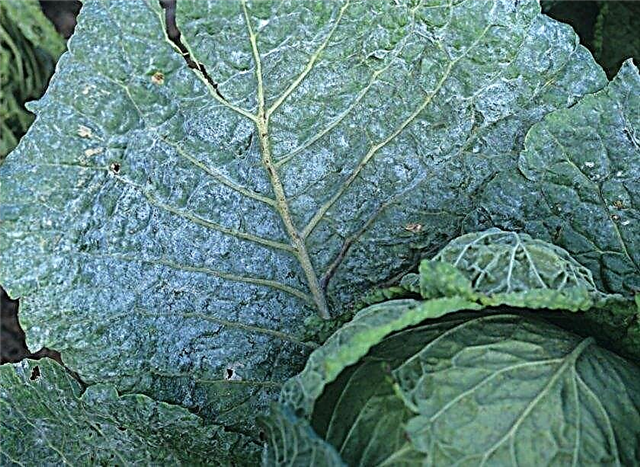
Kila - a fungal disease affecting the root of the plant. In the process of combating an ailment, preventive measures are used:
- removal of infected seedlings together with a lump of land (to prevent infection of neighboring crops);
- crop rotation compliance;
- soil treatment with lime before planting cabbage plants in the ground (1 kg of substance per 4 m²).

The culture of this species also suffers from pests: aphids, caterpillars, scoop. They can be scared away by planting plants with a spicy specific aroma in the aisle of cabbage: marigolds, mint, sage, nasturtium. Of folk remedies for controlling parasites, it is recommended to use an infusion:
- Tops of tomatoes and onion husks, with the addition of soap (a quarter bucket of these residues, pour water at a temperature of about 90 ° C, insist for 24 hours);
- Shredded nettle (1/3 bucket of the plant pour hot water for 2 days).
Important! To prevent cabbage disease, it is necessary to disinfect garden tools and planting material.
Harvesting and storage
Gloria cabbage is a mid-season variety. Ripening occurs 80 days after transplanting seedlings to the site, and when sowing seeds in open ground - 100-120 days. Cabbage is harvested from the end of summer until mid-autumn. Harvesting should be started for storage before the onset of frost, otherwise the product storability will decrease. Timely assembled forks do not lose their excellent taste and attractive appearance throughout the entire storage period (120-150 days). It is advisable to cut heads in dry, clear weather at an ambient temperature of + 3 ° C to + 10 ° C. Usually, the forks are cut with a sharp shovel or knife, but cabbage torn from the root is best stored. If there is moisture on the top leaves, then they need to be dried a little.
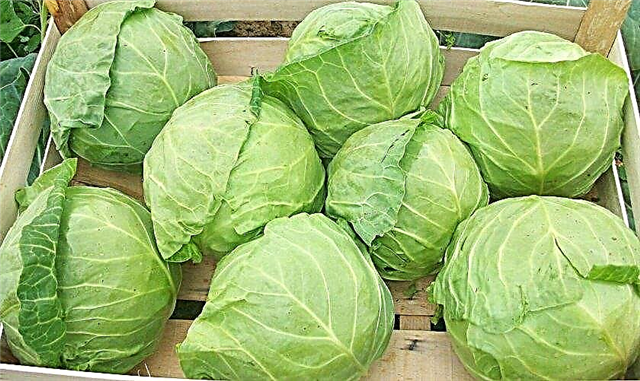 For winter storage only the strongest, healthy, undamaged specimens are selected
For winter storage only the strongest, healthy, undamaged specimens are selected
Cabbage is stored in cellars or cellars, placing it on shelves in 2-3 layers. With a small amount of harvest, you can hang the heads of cabbage (if there is a poker) on the ceiling, shelves or other structures. There is an interesting way that increases the cabbage's flatness - wrapping thick paper around each head of cabbage. In storage facilities where this product is contained, there should be good ventilation. The optimum temperature of the medium is from 0 ° С to + 2 ° С and relative humidity of 90–95%. The optimum temperature of the medium is from 0 ° С to + 2 ° С and relative humidity of 90–95%.
The optimum temperature of the medium is from 0 ° С to + 2 ° С and relative humidity of 90–95%.
Gloria cabbage is not pretentious during cultivation and does not require special expenses and efforts during cultivation. In the presence of such small flaws that are lost against the background of a huge number of positive criteria, this variety of cabbage plants is undoubtedly worthy of taking pride of place in your garden. Fulfilling the necessary recommendations for agricultural farming, taking care and proper care of the plant, you will certainly get the expected result: a high, excellent crop.

